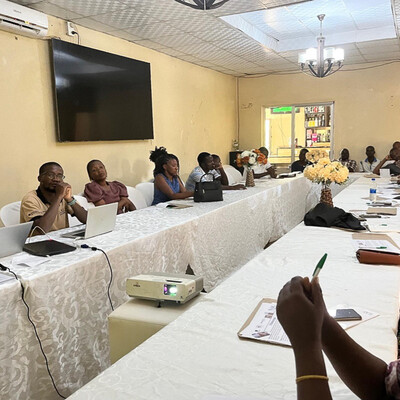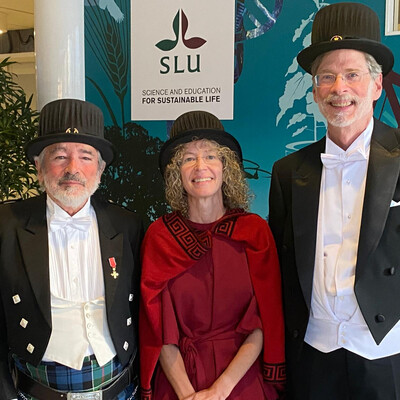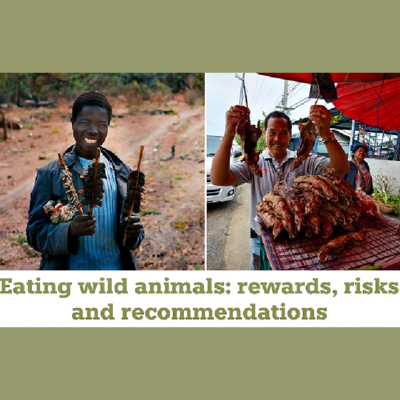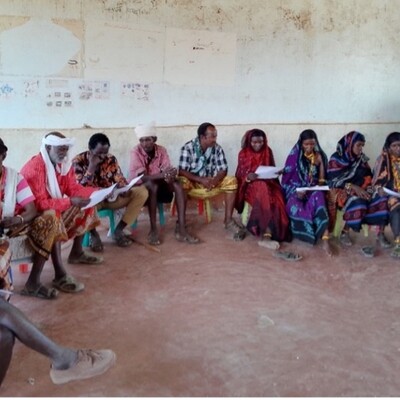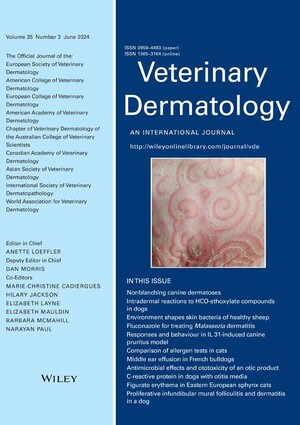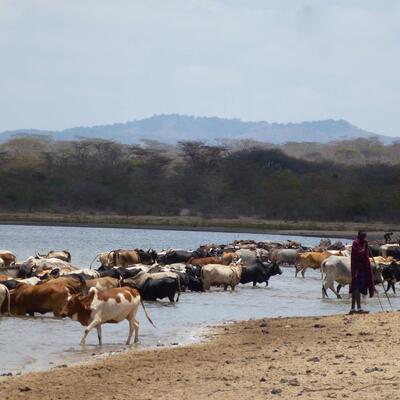
Thursday Links (25 July 2019)
A monthly round-up of recent articles, blog postings and tweets about livestock, aid and other topics that may be of interest to International Livestock Research Institute (ILRI) staff and partners, compiled by David Aronson.
We lead this month with two grim international reports. The first, from the FAO, says that once again this year the number of hungry people in the world has risen. This is the third year in a row the number has increased; at 820 million, the number of hungry in the world is back to levels not seen since 2010-2011. Regression is becoming the norm, warns the FAO’s chief statistician, threatening to reverse our progress on the SDGs for food security and nutrition. The full report is here.
[In that same report is dire news about local livestock breeds: As many as two-thirds are at risk of extinction, it says, and less than one percent of them have enough genetic material stored that would allow the breed to be reconstituted in case of extinction.]
The 2019 Sustainable Development Goals Report is out, and it too makes for grim reading. While it notes that progress is being made in some areas, other areas demand urgent global action:
The natural environment is deteriorating at an alarming rate: sea levels are rising; ocean acidification is accelerating; the past four years have been the warmest on record; one million plant and animal species are at risk of extinction; and land degradation continues unchecked. We are also moving too slowly in our efforts to end human suffering and create opportunity for all: our goal to end extreme poverty by 2030 is being jeopardized as we struggle to respond to entrenched deprivation, violent conflicts and vulnerabilities to natural disasters. Global hunger is on the rise, and at least half of the world’s population lacks essential health services.
ILRI in the News
Bill Gates  us. In a blog post titled ‘You’ve probably never heard of CGIAR, but they are essential to feeding our future,’ he writes that while it’s critical to fight climate change, ‘it’s equally important for the world to stay focused on helping vulnerable populations, like smallholder farmers, prepare for the disruptive impacts of climate change.’
us. In a blog post titled ‘You’ve probably never heard of CGIAR, but they are essential to feeding our future,’ he writes that while it’s critical to fight climate change, ‘it’s equally important for the world to stay focused on helping vulnerable populations, like smallholder farmers, prepare for the disruptive impacts of climate change.’
Eric Févre work on how urban wildlife may spread AMR, published last month in Lancet Planetary Health and featured in the Telegraph, was also featured in a long article in Kenya’s the Nation.
Hung Nguyen is featured prominently in this long article in SciDev.net on the overuse of antibiotics in animal feed. The overuse of antibiotics has been identified as a leading cause of antimicrobial resistance. The article focused on some preliminary work Nguyen is doing with silver nanoparticles, which may have some of the same growth enhancing and disease protecting properties as antibiotics.
Livestock Data for Decisions (LD4D) has an excellent interview with ILRI’s Jim Hammond about RHoMIS, the tool for streamlined rural household surveys, including livestock: ‘Ultimately, by making these household surveys more efficient, robust, and comparable, we aim to free up more time and budget for other project activities, and develop a bank of data available to the wider community,’ he says.
Polly Ericksen and Todd Crane are both featured in this CCAFS webcast of a seminar on how to lower emission livestock production options in East Africa and how this can translate into improved incomes for farmers. Available on Youtube.
The Technologies for African Agricultural Transformation (TAAT) showcases the work of ILRI and other CGIAR centres in converting cassava peel into high quality feed for animals. Developed and packaged by ILRI, the technology converts the toxic and environmentally destructive waste product of cassava ‘into a product that is safe and hygienic as livestock feed.’
Mireille Ferrari has an excellent primer on ‘rangelands and why they matter’. It covers what rangelands are all about, the surprising economic and environmental roles they play and why they absolutely need our attention.
Alt-Meats
We’ve got lab-based hamburgers; will lab-cultured steaks be next? A good piece in The Conversation on the scientific challenges of fabricating a plausible-tasting sirloin. And it’s not just meat: Lab-grown milk will soon be jostling for space on supermarket shelves alongside the plant-based dairy alternatives like soy or almond. There’s lab-grown ice-cream too!
A New York Times columnist says that ditching meat for alternatives is the single most effective thing an individual can do to save the planet. No word from him on what poor people in the developing world should do.
Four articles making the affirmative case for meat:
- At HuffPost, Katy Severson, a freelance writer and chef, argues that it’s not whether we have animals but how we manage them that determines whether they’re harmful or helpful to the environment. She urges us to move animals ‘back to pastured grasslands, mimicking the natural ecosystems that existed long before industrial agriculture took hold.’
- In Farmers’ Weekly, Philip Clark says that ruminants are being unfairly castigated over greenhouse gas emissions. He profiles the work of Professor Michael Lee from Rothamsted Research, who argues that the way greenhouse gases are measured and their contribution to global warming assessed is deeply flawed.
- In the Star Tribune, Paul John Scott, another freelance writer, argues that “the campaign underway to shame the world into giving up animal foods in the name of climate change is pure vegetarian projection, a low-calorie mixture of facts and assumptions. It piggybacks on our anxiety over rising seas, shifting a worthwhile fear of greenhouse gases onto an unfounded fear of meat.”
- Saul Morris, program director at GAIN, says that the anti-meat activists ignore its potential nutritive benefits for pregnant mothers and children in developing countries: ‘We would like to see the debate move on from “End consumption of meat, everywhere!”’ he writes.
A long article on silvopasture—combining livestock with productive trees—showcases how a farmer in Portugal is combating climate change: “Animals are the key,” he says. “They are important for the whole ecosystem, as well as part of the food chain. They must be balanced with the tree system. Pigs provide digestion, and are good for the soil, they disturb the ground and fertilise the land. The natural fertility cycles work better with them. The pig is not a meat machine but a friend of nature.”
Miscellaneous
Some two billion people are estimated to eat bugs as part of their diet. Scientists studying the anti-oxidant capacity of 12 commercially available bugs have found that silkworm, grasshoppers and crickets all have five times the anti-oxidant effect of orange juice, while giant water bugs, the Thai zebra tarantula, and black scorpions do not. But don’t rush out and buy your chocolate-covered crickets just yet. What this all means for human health and nutrition is still TBD. The Economist points to a more plausible entry point for industrial-produced insects in the food chain: as animal fodder—particularly fish food. ‘Grown on cheap inputs, then crushed and formed into meal, they will thus provide all of the nutritional advantages the visionaries talk of, but at one remove from people’s dining tables instead of being served up directly for lunch’.
Eleven babies died at Kenyatta National Hospital’s newborn unit earlier this month, and a drug-resistant bacterium known as Klebsiella is suspected to be the cause. An article in the Nation by the redoubtable Verah Okeyo, who also wrote that profile of Fevre’s work.
The US Department of Agriculture has a long and notorious history of racism. This is an important article on how, in attempting to fight that legacy, the USDA promoted misleading data to depict a fictional renaissance in black farming, falsely inflated the department’s record on civil rights—and ultimately cost black farmers land, money, and agency.
A group of African agricultural scientists recently convened in Kampala, Uganda, to call for Africans to embrace GMOs, saying they are more resistant to diseases and pests than traditional varieties.
The Cheyenne and Arapaho, two native American tribes in Oklahoma, are building a bison processing plant to capitalize on growing consumer interest in bison sales.
The Ugandan government is preparing to register all animals and issue them with birth certificates. This will be done to fulfil international market requirements. So said the Minister for Agriculture, Animal Industry and Fisheries Vincent Bamulangaki Ssempijja during official opening of the 27th Source of the Nile Agricultural Show in Jinja last month. However, many Ugandans appear to be sceptical that this will actually happen.
Big Reports
The Fate of Food, a new book by American freelance writer Amanda Little, explores how the world will feed itself in an era of global warming.
An article in The Guardian in observance of World Population Day notes that the world is adding 100 million people every 14 months—and that there will be 3 billion more people on earth by 2050, most of them African. If we reach 10 billion, it warns, ‘every forest, valley and piece of land will have to be turned to agriculture to feed us’. And here is another, more thorough take on the subject from the World Bank.
The National Geographic write-up of the EAT/Lancet report is out. Its largely uncritical review recapitulates the main arguments of the report but adds criticism from other food think tanks that the report doesn’t go far enough. It makes the case for an agroecological approach to food production, in which external inputs like chemical fertilizer are replaced with knowledge of how a combination of plants, trees, and animals can enhance the productivity of land.
Conflict
Nigerian Fulani are protesting what they view as their scapegoating by police, in the aftermath of the murder of a local chief’s daughter.
A sobering assessment from a UN-based Expert Working Group on how climate change in Somalia is likely to exacerbate drivers of conflict for decades to come.
In northeastern DRC, both government authorities and CSOs are issuing increasingly inflammatory rhetoric against the cattle-herding Fulani (known locally as Mbororo), just as UN peacekeepers are preparing to leave.
Communications
The Dunning-Krueger effect strikes again: A study of people’s attitudes towards GMOs found that the people most opposed to them scored the lowest on tests of scientific knowledge. But wait—it gets worse: Giving people the correct information on a scientific issue actually makes them less likely to act on it. It seems that the ‘knowledge deficit model’ favoured by many scientists—the notion that presenting people with scientific evidence will effectively persuade them to adopt those scientific beliefs or practices—is, ironically, itself deeply unscientific.
From the NGO Research to Action, here are six ways evidence can lead to actual policy change. A useful overview as we consider our own theory of change.
Some good communication tips for academic researchers here. Covers everything from how to give a good seminar presentation to how to visualize data.
Stuck trying to write that paper of yours? Here are several excellent journal article ‘skeletons’ to help get you started. Here’s one: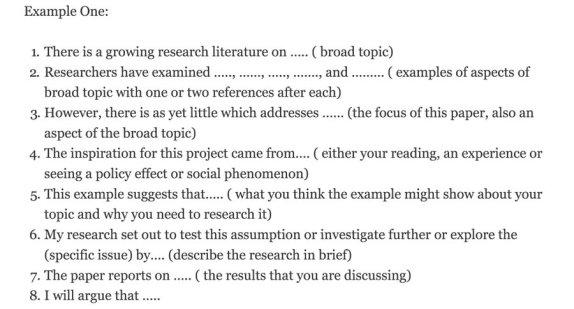
A compendium of articles about the whys and hows of podcasting here. And a cautionary take here. TL;DR: We may have hit peak pod.
A first-rate 12-part series on science communication is available here on Youtube. This is an excellent resource for scientists looking to communicate to the broader public.
Make no mistake: Writing science for laypeople is difficult. Make it simple enough for readers to understand and you risk misconstruing the facts. Make it too difficult and readers will turn away. Even harder is explaining to ordinary people that science is less a steady accumulation of facts than lots of sleuthing and informed guesswork.
WhatsApp is the most popular social media platform in Africa—and its effects on political discourse are mixed, with so-called ‘keyboard warriors’ using the platform to curry favour with political bosses and spread malicious rumours about their opponents.
Odds ‘N Ends
From the Wonkette, usually a site of waspish humour about the absurdities of American political life, comes this delightful review of the underrated importance of cows in the growth and development of Western art.
First they came for the roosters—and France was all like, hell no. This is a funny long-form piece on Maurice, the most famous rooster in France, and how he’s become a symbol of the conflict between the folks who live in rural France and the urbanites who simply want to vacation there in peace and quiet.
According to Merriam-Webster, in old English, the word “meat” referred to any solid food, whether animal or plant-based, as distinguished from drink. Milk, too, has always had an expansive meaning—bad news for legislators looking to limit labeling of foods to protect existing industries. (In Mississippi, for example, it is now illegal for plant-based meat providers to use labels like “veggie burger” or “vegan hot dog” on their products.)
What exactly is a species, anyway? At last count, there were 26 definitions, and all of them in one way or another thought deficient. The problem so vexed Darwin that he proposed that one day, biologists could pursue their studies without ever worrying about what a species is. An entertaining discussion of the most fundamental conundrum in biology.
She’s the best kind of therapist: endlessly attentive, non-judgemental, and kind. She barely says a word and she’ll even let you hug her. And at a mere $75/hour, she’s a third the price of her counterpart in New York or LA. Meet Bella, the therapist cow.
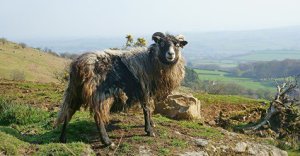 Finally, if you’re thinking of mooving on from ILRI (sorry not sorry), a remote Scottish island is hiring a warden to protect its seaweed-loving sheep.
Finally, if you’re thinking of mooving on from ILRI (sorry not sorry), a remote Scottish island is hiring a warden to protect its seaweed-loving sheep.






